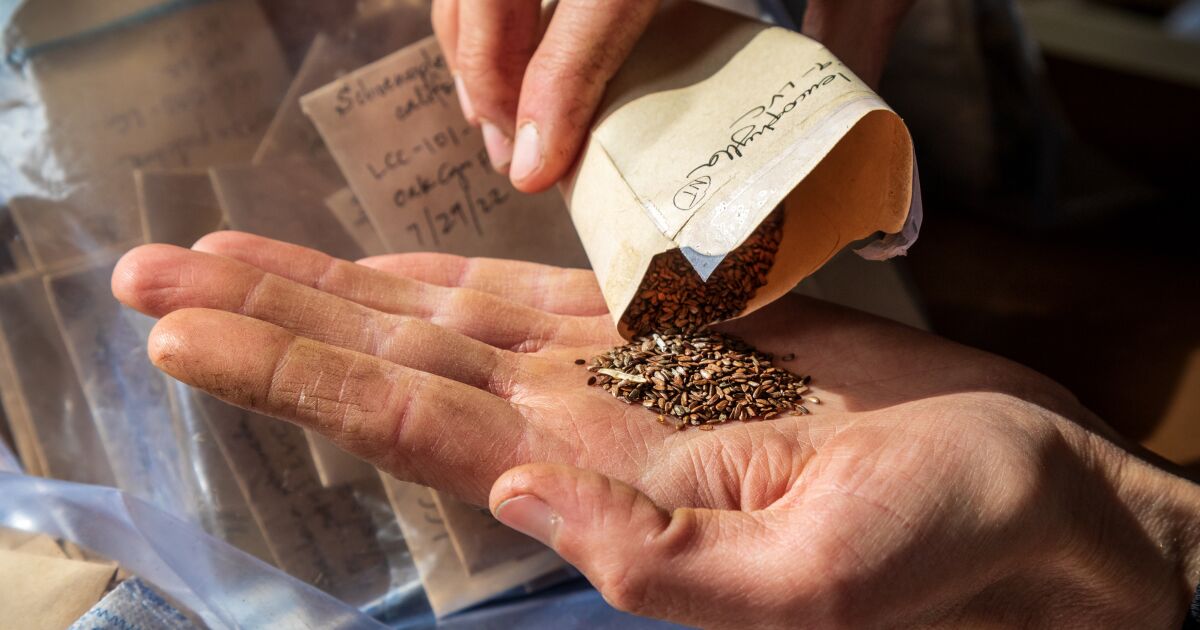Full Artical won’t fit.
How do you create a convincing span of nature over one of the state’s busiest freeway corridors so wildlife like L.A.’s famous, ill-fated cougar, P-22, can cross unscathed?
First you build a nursery and collect a million hyperlocal seeds.
This is not hyperbole. After Katherine Pakradouni was hired in January 2022 to grow the plants for the upcoming Wallis Annenberg Wildlife Crossing in Agoura Hills, she spent much of the year combing the hills within five miles of the crossing, collecting — yes — more than a million seeds from native plants.
Before she went collecting, she had to build a special nursery near the north side of the crossing, where she and her team are planting those seeds to grow trays and trays of the native flora that will fill the crossing when the concrete superstructure is completed late next year.
Those girders are scheduled to be installed over several weeks, starting this fall, between midnight and 5 a.m. The freeway will never be closed completely, Rock said. Using precast girders means the span can be constructed first on one side of the freeway and then the other, so traffic can be diverted in the wee hours to other lanes.
Once the drainage system is completed and the soil is brought in, planting can begin. The $92-million project — split 50/50 between public money and donations to the National Wildlife Federation and its Save LA Cougars fund, including $26 million from Wallis Annenberg and the Annenberg Foundation, its largest contributor — is scheduled for completion at the end of 2025.

